Science & Environment
This niche AI play is seeing business growth rates that are triple the pace of the data centers

A large hallway with supercomputers inside a server room data center.
Luza Studios | E+ | Getty Images
As artificial intelligence fuels the boom in data center growth, investors are eyeing a new frontier: the companies keeping these digital powerhouses cool.
nVent Electric, Vertiv and Modine Manufacturing have seen their stocks soar in 2024, buoyed by partnerships with tech giants investing billions in AI infrastructure. Despite the gains, Wall Street believes these cooling leaders have room to run as the fast-growing data center market they serve desperately requires liquid cooling to operate effectively.
Shares of nVent are up 23% this year, while Vertiv and Modine have rallied 133% and 125%, respectively in 2024. Yet there’s been a lot of volatility in stocks with exposure to data centers. All three names experienced massive drawdowns that coincided with Nvidia’s sell-off on Sept. 3 — when the AI darling tumbled 10% in a single session — creating a buying opportunity, according to many analysts.
That’s because historically, data centers used air cooling to manage the heat generated by traditional cloud applications. But as the AI boom continues using new chips like Nvidia’s graphics processing units to train AI models, they’re generating high density computing power, consuming far more energy, and producing more heat in the process. This shift is forcing data center operators to rethink their cooling strategies to help servers run at peak efficiency, and liquid cooling is emerging as the method of choice given it’s 25 times more effective than air-cooling.
“The reality is data centers cannot run AI processing in any capacity without using liquid cooling,” said Dean Dray, analyst at RBC Capital Markets to CNBC. “The thermal dynamics of the heat generation in the chips have reached the stage where legacy air conditioning is no longer powerful enough for the concentrated heat that gets created.”
Triple data center growth
Vertiv and Modine are legacy air cooling players that entered the liquid cooling market through acquisitions, while nVent is a pioneer. Unlike traditional air cooling — which relies on air conditioners, fans and vents to blow cool air over racks of servers — the technology uses a liquid coolant to absorb and remove heat right where it’s generated.
“The need for liquid cooling is not cannibalizing the need for mechanical (air) cooling,” Matt Summerville, an analyst at D.A. Davidson said in an interview. Instead, he expects data centers will use a hybrid of legacy air conditioning and liquid cooling systems to protect IT equipment from heat damage and for overall environmental control in data centers.
Liquid cooling, still a nascent industry, is growing sales at a rate of 45% a year — three times faster than the 15% growth rate in data centers. The total addressable market for liquid cooling is roughly $3 billion, with about 5% of data centers using it, analysts said. They expect that to accelerate.
“The AI-driven side of the liquid cooling market is expected to be in 25% of all data centers by 2028,” Summerville said.
A liquid cooling pioneer
As one of the top five companies in the world involved in data center cooling, nVent, is very well positioned to benefit, William Blair analyst Brian Drab said.
The company has been in the liquid cooling business for well over a decade, giving it the time to refine and innovate its products. Originally invented 15 years ago for high-end mechanical equipment, nVent stumbled upon a major opportunity in data center cooling.

nVent shares year to date
“They invented the liquid cooling business,” RBC Capital Markets analyst Dean Dray said, describing how data center operators discovered nVent’s products were exactly what was needed to cool high-powered servers. This kicked off relationships that nVent has “with literally all of hyperscale players,” and quietly made it a key partner in designing and testing thermal solutions for every generation of GPUs and chips, he explained.
Dray said nVent is “very guarded” about those partnerships, but will eventually need to figure out how to “explain their market presence and all of the hyperscale players they’re doing business with to get investors comfortable that these relationships exist.”
The company’s core product is a coolant distribution unit — what Drab called the “brains of the liquid cooling system connected to the racks in the data center.” This state-of-the-art liquid cooling technology “knows how hot a chip is and delivers liquid to it – and it’s doing it with thousands of chips throughout the data center,” Drab explained. He has an outperform rating on nVent with an $80 price target, or nearly 10% upside from Friday’s close.
Currently, nVent’s total revenue exposure to data centers is 23%. Half of that comes from liquid cooling, which is growing more than 40% annually. The other half comes from the electrical equipment for data centers, which is growing 15% annually.
A strong backlog of business
Vertiv has a much larger exposure to liquid cooling, with 75% of its revenue tied to data centers. The company entered the market through the acquisition of CoolTerra in December 2023. Before that, it was primarily in legacy air conditioning.
Jefferies’ analyst Saree Boroditsky estimated Vertiv’s data center revenue could grow at a compound annual growth rate of 20% over the next four years, well above the 9% to 12% top line growth management projected at its December 2023 investor day.

Vertiv shares year to date
This week, Boroditsky initiated coverage of Vertiv with a buy and a price target of $125, or about 12% from where the stock closed Friday.
The Jefferies analyst expects Vertiv earnings to grow at 24% CAGR through 2027 given its “strong incoming backlog,” which could provide upside to 2025 estimates. Boroditsky also noted the company’s $5 billion balance sheet capacity, which could be used for acquisitions or share buybacks, providing more upside for the stock.
A newcomer to the space
Modine is a third standout that historically had a rapidly growing air-cooling business. The company recently made its way into liquid cooling. In the beginning of 2024, Modine purchased intellectual property assets of TMG Core, a specialist in liquid cooling technology to accelerate data center growth. Modine’s second purchase this year was the addition of Scotts Springfield Manufacturing, a manufacturer of air handling units, adding more products to its data center solutions portfolio.

Modine shares year to date
These acquisitions will help with Modine’s data center business, which is already on pace to grow about 50% in 2024 as management focuses on higher growth end markets like cooling solutions.
At its investor day on Sept. 11, Modine provided a forecast for top-line CAGR of 18% to 22% through fiscal 2027 in its climate solutions segment where the data center business is housed, above its previous target range of 15% to 20%.
A major reason behind the higher targets is the expansion of Modine’s partnerships with hyperscalers. The company recently signed a deal with its third major customer.
“Being able to continue to penetrate these AI pioneers is absolutely going to be key for Modine to maintain market growth on an organic basis,” Summerville said. He added, the company is broadening its reach with plans to serve the Asia Pacific market, where data center activity is ramping up.
Another catalyst for Modine is the company’s commitment to having a CDU available in the market by the end of its fiscal year in March. Summerville gauges, “early excitement around the launch of their cooling distribution unit” as big data center players bring more capacity online.
Following Modine’s investor day, Summerville updated his price target on Modine stock to $155 from $140, implying 15% upside from Friday’s close, while maintaining a buy rating on shares.
Science & Environment
Renowned scientist’s ashes dropped into eye of Category 5 Hurricane Milton as lasting tribute
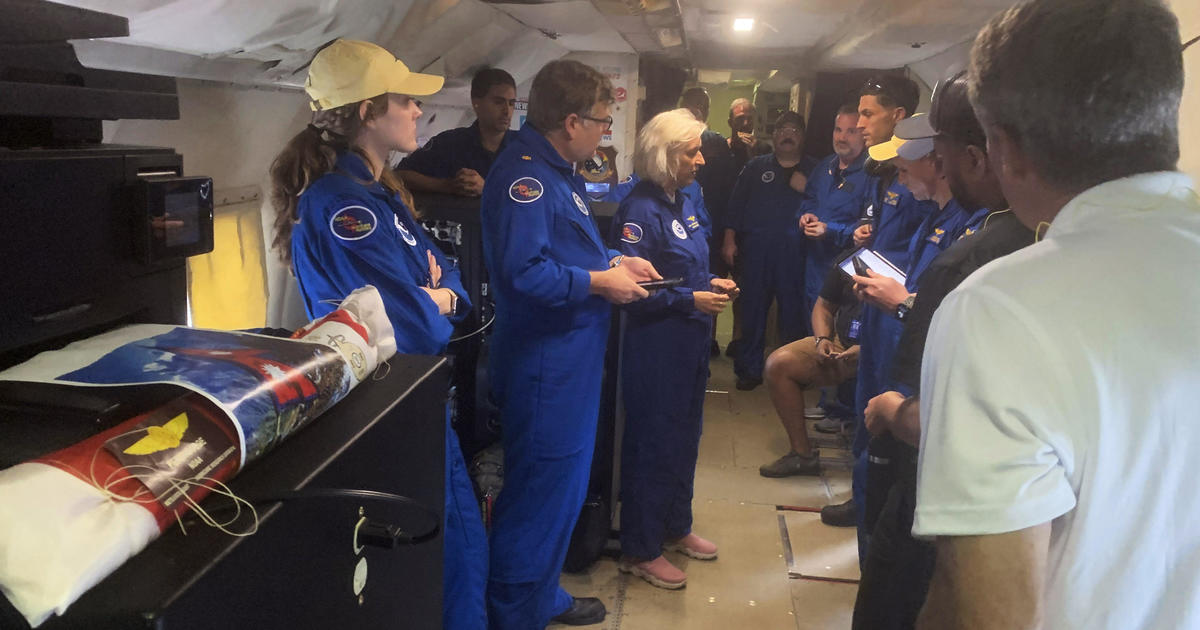
As an award-winning scientist, Peter Dodge had made hundreds of flights into the eyes of hurricanes — almost 400. On Tuesday, a crew on a reconnaissance flight into Hurricane Milton helped him make one more, dropping his ashes into the storm as a lasting tribute to the longtime National Oceanic and Atmospheric Administration radar specialist and researcher.
“It’s very touching,” Dodge’s sister, Shelley Dodge, said in an interview Thursday with The Associated Press. “We knew it was a goal of NOAA to make it happen.”
The ashes were released into the eye of the hurricane Tuesday night, less than 24 hours before Milton made landfall in Siesta Key near Sarasota, Florida. An in-flight observations log, which charts information such as position and wind speed, ended with a reference to Dodge’s 387th — and final — flight.
“He’s loved that aspect of his job,” Shelley Dodge said. “It’s bittersweet. On one hand, a hurricane’s coming and you don’t want that for people. But on the other hand, I really wanted this to happen.”
Dodge died in March 2023 at age 72 of complications from a fall and a stroke, his sister said.
The Miami resident spent 44 years in federal service. Among his awards were several for technology used to study Hurricane Katrina’s destructive winds in 2005.
He also was part of the crew aboard a reconnaissance flight into Hurricane Hugo in 1989 that experienced severe turbulence and saw one of its four engines catch fire.
“They almost didn’t get out of the eye,” Shelley Dodge said.
Items inside the plane were torn loose and tossed about the cabin. After dumping excess fuel and some heavy instruments to enable the flight to climb further, an inspection found no major damage to the plane and it continued on. The plane eventually exited the storm with no injuries to crew members, according to NOAA.
A degenerative eye disorder eventually prevented Dodge from going on further reconnaissance flights.
Shelley Dodge said NOAA had kept her informed on when her brother’s final mission would occur and she relayed the information to relatives.
“There were various times where they thought all the pieces were going to fall in place but it had to be the right combination, the research flight. All of that had to come together,” she said. “It finally did on the 8th. I didn’t know for sure until they sent me the official printout that showed exactly where it happened in the eye.”
Dodge had advanced expertise in radar technology with a keen interest in tropical cyclones, according to a March 2023 newsletter by NOAA’s Atlantic Oceanographic and Meteorological Laboratory announcing his death.
The newsletter said colleagues were “saddened by the sudden and tragic loss of one of its longtime meteorologists,” who died peacefully on March 3.
He collaborated with the National Hurricane Center and Aircraft Operations Center on airborne and land-based radar research. During hurricane aircraft missions, he served as the onboard radar scientist and conducted radar analyses. Later, he became an expert in radar data processing, the newsletter said. He received a Department of Commerce Bronze Medal, two NOAA Administrator Awards and the Army Corp of Engineers Patriotic Civilian Service Award.
Dodge’s ashes were contained in a package. Among the symbols draped on it was the flag of Nepal, where he spent time as a Peace Corps volunteer teaching math and science to high school students before becoming a meteorologist.
Hurricane specialist Michael Lowry shared a photo on social media of the NOAA log noting the ashes were dropped calling it a “beautiful tribute.”
An avid gardener, Dodge also had a fondness for bamboo and participated in the Japanese martial art Aikido, attending a session the weekend before he died.
“He just had an intellectual curiosity that was undaunted, even after he lost his sight,” Shelley Dodge said.
Science & Environment
How unusual has it been?
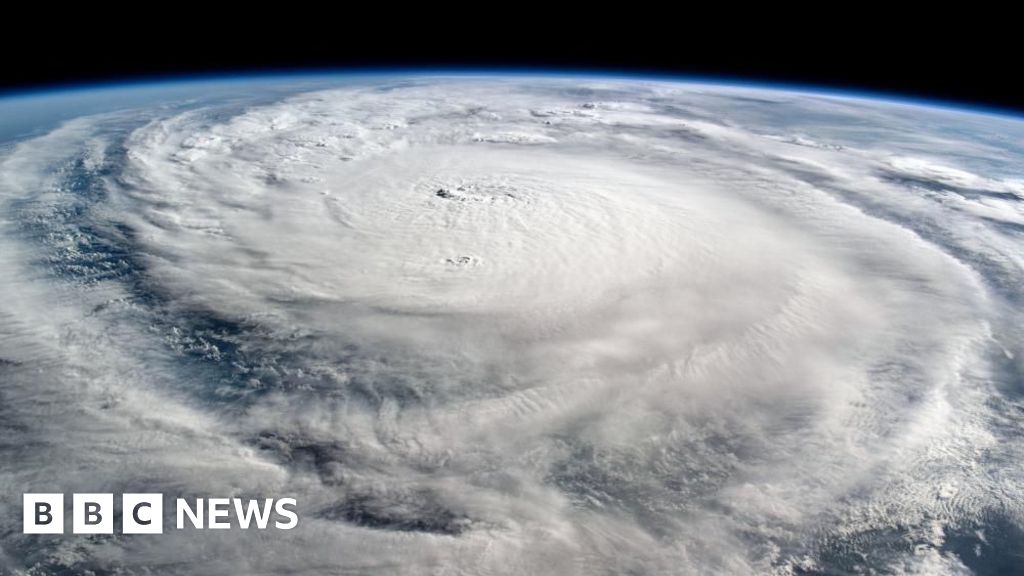
 NASA/ISS
NASA/ISSHurricanes Helene and Milton – which have devastated parts of the south-east United States – have bookended an exceptionally busy period of tropical storms.
In less than two weeks, five hurricanes formed, which is not far off what the Atlantic would typically get in an entire year.
The storms were powerful, gaining strength with rapid speed.
Yet in early September, when hurricane activity is normally at its peak, there were peculiarly few storms.
So, how unusual has this hurricane season been – and what is behind it?
The season started ominously. On 2 July, Hurricane Beryl became the earliest category five hurricane to form in the Atlantic on records going back to 1920.
Just a few weeks earlier in May, US scientists had warned the 2024 season from June to November could be “extraordinary”.
It was thought that exceptionally warm Atlantic temperatures – combined with a shift in regional weather patterns – would make conditions ripe for hurricane formation.
So far, with seven weeks of the official season still to go, there have been nine hurricanes – two more than the Atlantic would typically get.
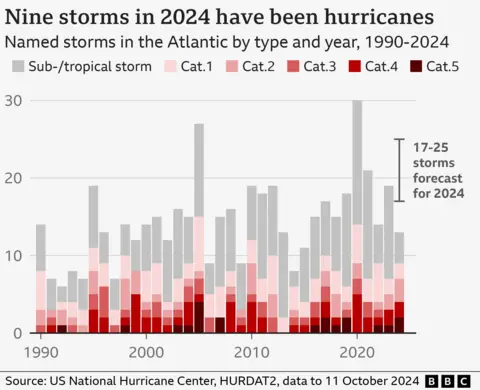
However, the total number of tropical storms – which includes hurricanes but also weaker storms – has been around average, and less than was expected at the start of the year.
After Beryl weakened, there were only four named storms, and no major hurricanes, until Helene became a tropical storm on 24 September.
That is despite warm waters in the tropical Atlantic, which should favour the growth of these storms.
Across the Main Development Region for hurricanes – an area stretching from the west coast of Africa to the Caribbean – sea surface temperatures have been around 1C above the 1991-2020 average, according to BBC analysis of data from the European climate service.
Atlantic temperatures have been higher over the last decade, mainly because of climate change and a natural weather pattern known as the Atlantic Multidecadal Oscillation.
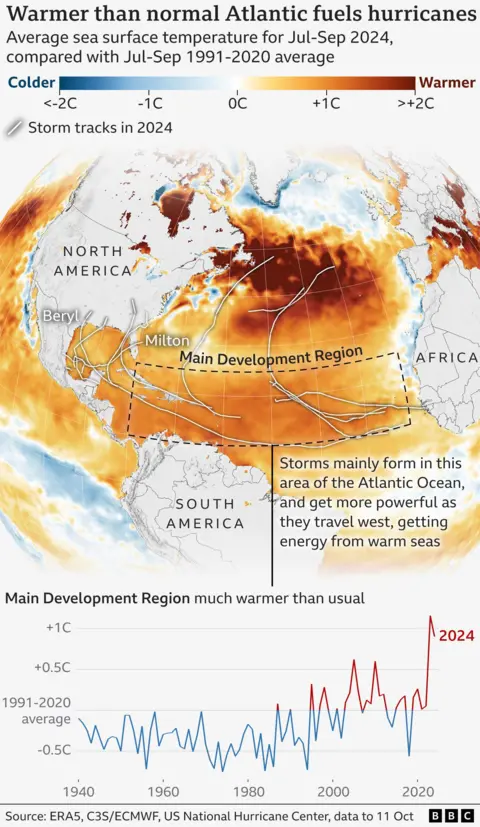
The recipe for hurricane formation involves a complex mix of ingredients beyond sea temperatures, and these other conditions were not right.
“The challenge [for forecasting] is that other factors can change quickly, on the timescale of days to weeks, and can work with or against the influence of sea surface temperatures,” explains Christina Patricola, associate professor at Iowa State University.
Researchers are still working to understand why this was the case, but likely reasons include a shift to the West African monsoon and an abundance of Saharan dust.
These both hampered storm development by creating unfavourable conditions in the atmosphere.
But even during this period, scientists were warning that the oceans remained exceptionally warm and that intense hurricanes were still possible through the rest of the season.
And in late September, they came.

Starting with Helene, six tropical Atlantic storms were born in quick succession.
Fuelled by very warm waters – and now more favourable atmospheric conditions – these storms strengthened, with five becoming hurricanes.
Four of these five underwent what is known as “rapid intensification”, where maximum sustained wind speeds increase by at least 30 knots (35mph; 56km/h) in 24 hours.
Historical data suggests that only around one in four hurricanes rapidly intensify on average.
Rapid intensification can be particularly dangerous, because these quickly increasing wind speeds can give communities less time to prepare for a stronger storm.
Hurricane Milton strengthened by more than 90mph in 24 hours – one of the fastest such cases of intensification ever recorded, according to BBC analysis of data from the National Hurricane Center.
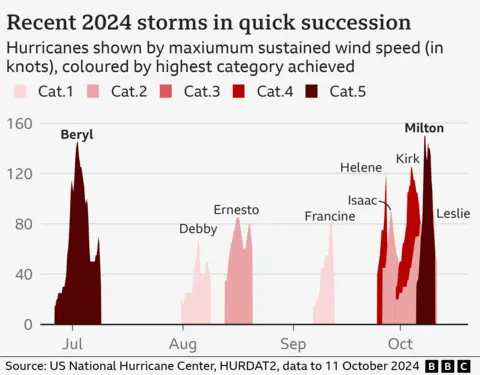
Scientists at the World Weather Attribution group have found that the winds and rain from both Helene and Milton were worsened by climate change.
“One thing this hurricane season is illustrating clearly is that the impacts of climate change are here now,” explains Andra Garner from Rowan University in the US.
“Storms like Beryl, Helene, and Milton all strengthened from fairly weak hurricanes into major hurricanes within 12 hours or less, as they travelled over unnaturally warm ocean waters.”
Milton also took an unusual, although not unprecedented, storm path, tracking eastward through the Gulf of Mexico, where waters have been exceptionally warm.
“It is very rare to see a [category] five hurricane appearing in Gulf of Mexico,” says Xiangbo Feng, research scientist in tropical cyclones at the University of Reading.
Warmer oceans make stronger hurricanes – and rapid intensification – more likely, because it means storms can pick up more energy, potentially leading to higher wind speeds.
What about the rest of the season?
US forecasters are currently watching an area of thunderstorms located over the Cabo Verde Islands off the west coast of Africa.
This could develop into another tropical storm over the next couple of days, but that remains uncertain.
As for the rest of the season, high sea surface temperatures remain conducive for further storms.
There is also the likely development of the natural La Niña weather phenomenon in the Pacific, which often favours Atlantic hurricane formation as it affects wind patterns.
But further activity will rely on other atmospheric conditions remaining favourable, which are not easy to predict.
Either way, this season has already highlighted how warm seas fuelled by climate change are already increasing the chances of the strongest hurricanes – something that is expected to continue as the world warms further.
“Hurricanes occur naturally, and in some parts of the world they are regarded as part of life,” explains Kevin Trenberth, a distinguished scholar at the National Center for Atmospheric Research in Boulder, Colorado, USA.
“But human-caused climate change is supercharging them and exacerbating the risk of major damage.”
Science & Environment
WTI, Brent head to small weekly gain
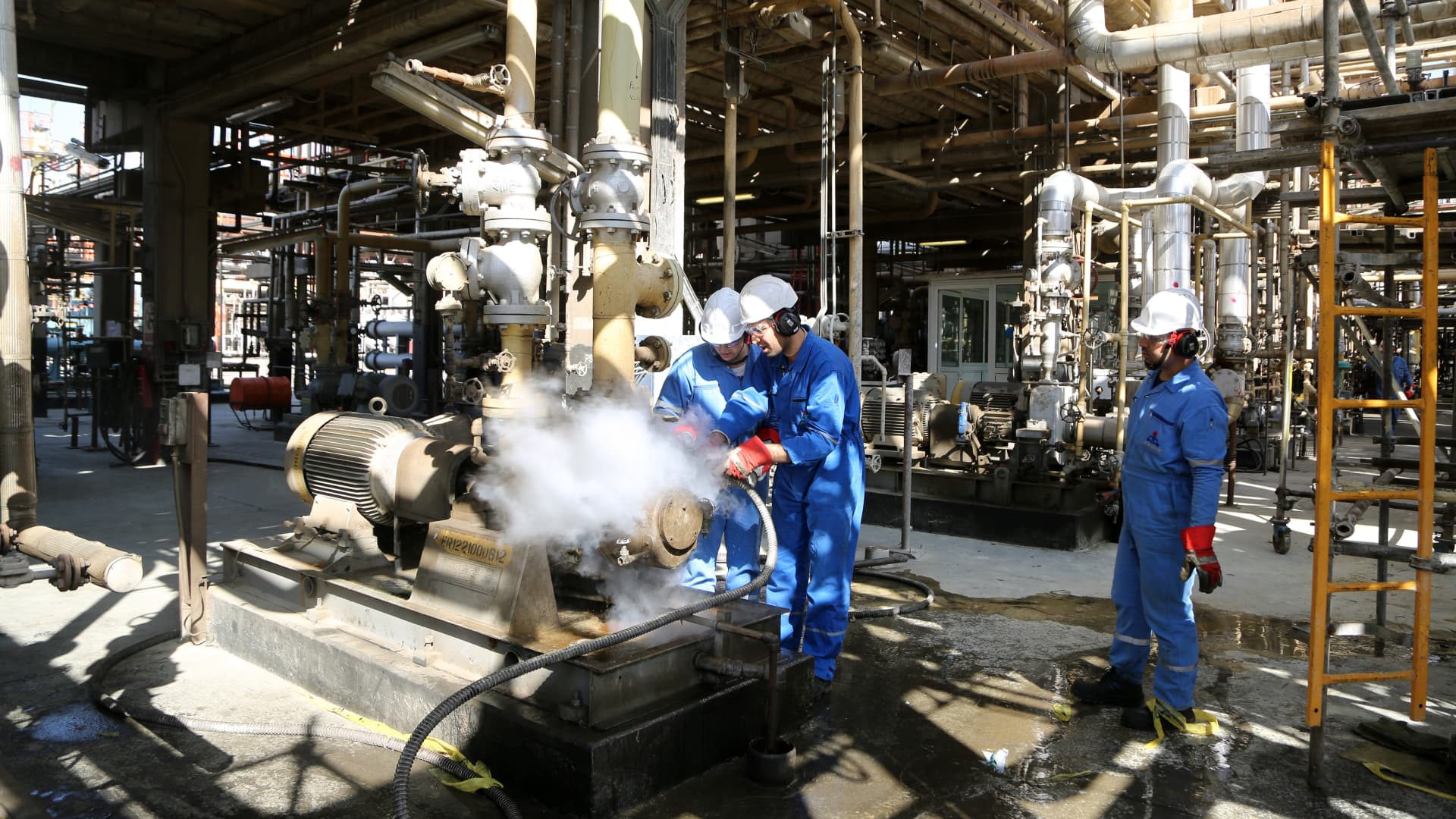

U.S. crude oil on Friday was on pace to eek out its second weekly gain in a row as Israel prepares to retaliate against Iran.
The U.S. benchmark has gained 1% this week, while global benchmark Brent is ahead 0.8%. Oil prices have gained more than 10% through Thursday’s close since Iran hit Israel with ballistic missiles last week.
“Nevertheless, sustaining bullish price momentum in oil has proven to be a high maintenance task: without additional catalysts, the ‘war’ and ‘stimulus’ premiums have shown easy susceptibility to fading,” Natasha Kaneva, head of global commodity strategy at JP Morgan, told clients in a Friday note.
Here are Friday’s energy prices:
- West Texas Intermediate November contract: $75.21 per barrel, down 64 cents, or 0.84%. Year to date, U.S. crude oil has gained nearly 5%.
- Brent December contract: $78.77 per barrel, down 63 cents, or 0.79%. Year to date, the global benchmark has increased about 2%.
- RBOB Gasoline November contract: $2.1414 per gallon, down 0.44%. Year to date, gasoline is ahead 1.7%.
- Natural Gas November contract: $2.685 per gallon, up 0.37%. Year to date, gas has risen about 6%.
Israel’s security cabinet met Thursday to discuss the country’s response to Iran’s attack, according to media reports. President Joe Biden and Prime Minister Benjamin Netanyahu spoke by phone on Wednesday.
Traders have worried that Israel will hit Iran’s oil industry, potentially triggering a cycle of escalation that causes a significant disruption of supplies in the Middle East. Biden has discouraged Israel from targeting Iran’s oilfields. The Arab Gulf states have also reportedly lobbied the White House to pressure Israel to refrain from hitting Iranian energy infrastructure.
“We expect that the White House is potentially encouraging Israel to target refineries instead of oil export facilities, arguing that the economic impact would be more directly felt by Iran,” Helima Croft, head of global commodities strategy at RBC Capital Markets told clients in a Thursday note.
Croft warned, however, that the U.S. influence may have waned since April, when Israel’s response to Iran’s first missile and drone attack was relatively muted.
Science & Environment
Tiniest ‘ruler’ ever measures distances as small as an atom’s width


This fluorescent technique can precisely measure minuscule distances
Steffen J. Sahl / Max Planck Institute for Multidisciplinary Sciences
The tiniest “ruler” ever is so precise that it can measure the width of a single atom within a protein.
Proteins and other large molecules, or macromolecules, sometimes fold into the wrong shape, and this can affect the way they function. Some structural changes even play a role in conditions like Alzheimer’s disease. To understand this process, it is important to determine the exact distance between atoms – and clusters of atoms – within these macromolecules, says Steffen Sahl at the Max Planck Institute for Multidisciplinary Sciences in Germany.
“We wanted to go from a microscope that maps positions of macromolecules relative to each other, to taking this bold step of going within the macromolecule,” he says.
To construct their intramolecular “ruler”, Sahl and his colleagues used fluorescence, or the fact that some molecules glow when illuminated. They attached two fluorescent molecules to two different points on a larger protein molecule and then used a laser beam to illuminate them. Based on the light the glowing molecules released, the researchers could measure the distance between them.
They used this method to measure distances between the molecules of several well-understood proteins. The smallest of those distances was just 0.1 nanometres – the width of a typical atom. The fluorescent ruler also gave accurate measurements up to about 12 nanometres, meaning it had a broader measuring range than can be achieved with many traditional methods.
In one example, the researchers looked at two different forms of the same protein and found that they could distinguish between them because the same two points were 1 nanometre apart for one shape and 4 nanometres apart for the other. In another experiment, they measured tiny distances in a human bone cancer cell.
Sahl says the team achieved this precision by taking advantage of several recent technological advances, like better microscopes and fluorescent molecules that don’t flicker and don’t produce a glow that could be confused with some other effect.
“I don’t know how they got their microscopes so stable. The new technique is definitely a technical advance,” says Jonas Ries at the University of Vienna in Austria. But future studies will have to determine for which exact molecules it will prove most useful as a source of information for biologists, he says.
“While it boasts impressive precision, the new method may not necessarily achieve the same level of detail, or resolution, when applied to more complex biological systems,” says Kirti Prakash at The Royal Marsden NHS Foundation Trust and Institute of Cancer Research in the UK. Additionally, he says that several other new techniques are already becoming competitive in terms of measuring smaller and smaller distances.
Sahl says his team will now work on two tracks: refining the method further and expanding their ideas about which macromolecules they can now peer inside.
Topics:
Science & Environment
What is Elon Musk’s Starship space vehicle?
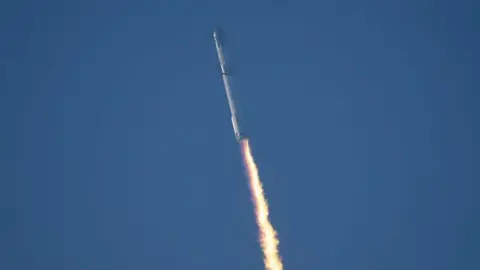 Getty Images
Getty ImagesElon Musk wants his new rocket to revolutionise spaceflight. And that rocket, Starship, is now the largest and most powerful spacecraft ever built.
It’s also designed to be fully and rapidly reusable. His private company SpaceX, which is behind the creation, is hoping to develop a spaceship that can be used more like a plane than a traditional rocket system, being able to land, refuel and take off again a few hours after landing.
When will Starship’s next launch be?
While there’s no exact date set yet for the rocket’s next flight, it could be as soon as this weekend – and SpaceX is expecting big things.
This will be Starship’s fifth outing, and all eyes will be on the landing phases – specifically, the return of the vehicle’s bottom part, the Super Heavy booster.
So far we’ve only seen what might be called a simulated landing at sea, or ‘splashdown’. This will be the first time we hope to see the booster return to the launch pad.
For a spacecraft to be reusable, it needs to be able to land safely.
The SpaceX founder has said they will try to catch the booster in mid-air on its return to Earth using the giant mechanical arms, or ‘chopsticks’, of the launch tower – or as Musk calls it, “Mechazilla”.
That’s something that’s never been done before, and eventually SpaceX want to catch the Ship – the top part of the vehicle – in the same way. But that won’t happen on the upcoming test flight.
Will Starship go to Mars?
None of Starship’s missions so far have been crewed, and there’s no plans to put people aboard for the next flight either.
But Musk and his company do have grand designs that the rocket system will one day take humanity to Mars.
A Mars trip isn’t on the horizon just yet. But the behemoth rocket already has some impressive specs, and dwarfs all of its predecessors.
How big and powerful is Starship?
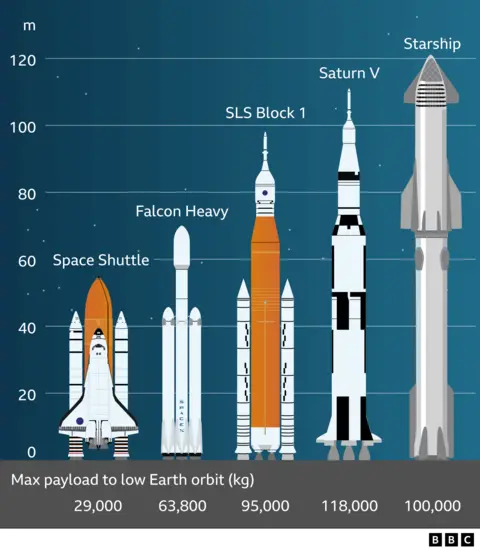
Starship is a two-stage vehicle. The “Ship” is the uppermost part, and that sits atop a booster called Super Heavy.
Thirty-three engines at the base of this booster produce around 74 meganewtons of thrust. To put that into perspective, it’s almost 700 times as powerful as the thrust generated by the common passenger plane, the Airbus A320neo.
If you’ve flown with Aer Lingus, British Airways or Lufthansa, imagine the kick of taking off in one of those planes. Then multiply that by 700.
The vehicle has grown about a metre since its second test flight in June of this year, with Starship now measuring just over 120m in total.
This additional height comes from the Super Heavy booster itself being made 1m longer.
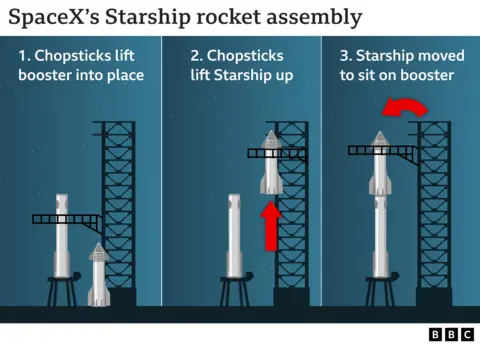
It’s also about twice as powerful as the Saturn V rocket which first took humanity to the Moon’s surface.
SpaceX says that power should be able to move a payload weighing at least 150 tonnes from the launchpad to low-Earth orbit.
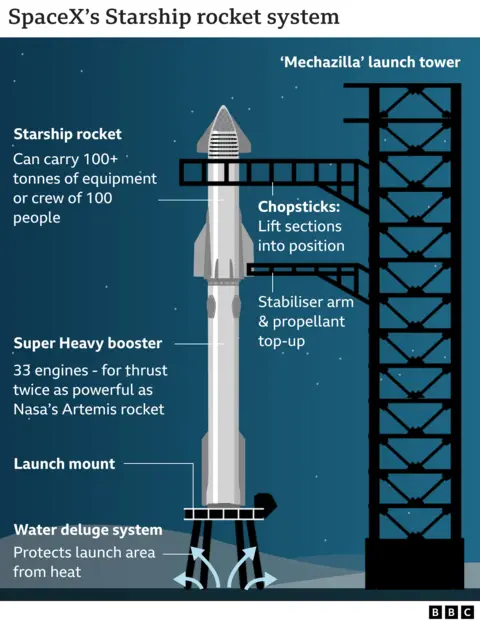
Both the Ship and the Super Heavy booster are fuelled with a mixture of icy-cold liquid methane and liquid oxygen fuel, known as methalox.
What has Starship done so far?
Starship has had four test flights up to now. During the first flight, the rocket system exploded early, before the Booster was able to separate.
It’s worth noting that such hiccups are part of SpaceX’s plan to speed up development by launching systems they know are not perfect and learning from the faults.
And each test has seen real progress – first with a hitch-free separation, and eventually a successful return, where both the Ship and the Booster made a controlled descent and hovered above the Indian Ocean and Gulf of Mexico respectively until splashing down.
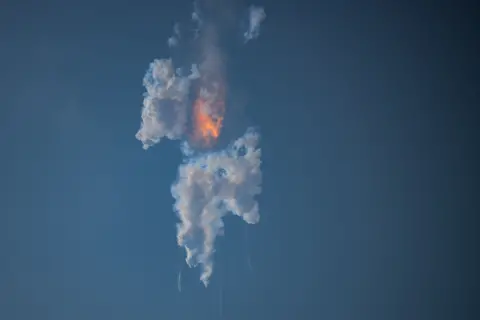 Getty Images
Getty ImagesHow does Starship land?
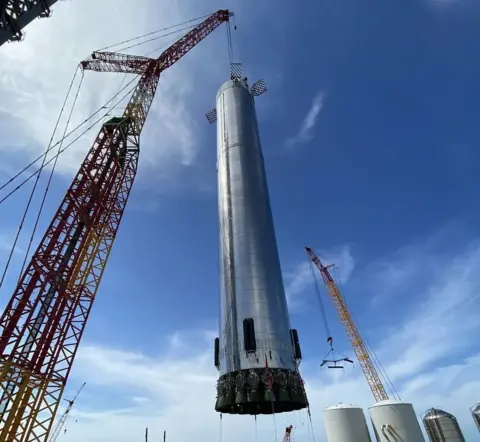 SpaceX
SpaceXAnyone watching nearby as the booster returns to Earth can expect a thunderous boom as it slows down from supersonic speeds.
While SpaceX plan to catch the booster with the launch tower, we won’t get a similar return of the top part – the Ship – this time. When we do, it shouldn’t look too different from the Super Heavy’s descent.
But since there’s no launch tower on Mars, or on the Moon for that matter, the Ship also needs to be able to land on its legs.
To do that, it manoeuvres itself horizontally as it starts to descend, in what Musk has called a ‘belly-flop’ manoeuvre. This increases the drag on the vehicle, slowing it down.
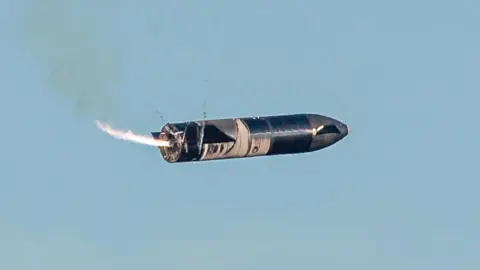 SpaceX
SpaceXOnce the Ship gets close enough to the surface, it’s then slow enough to fire its engines in a way that flips the vehicle into a vertical position.
The Ship then uses its rockets to guide itself down safely and land on a hard pad upon its landing legs.
All of this has been done by the Ship on its previous flight – apart from landing on a pad. So far it has only landed in the sea.

What are the challenges?
One of the purposes of test flying is to highlight problem areas, and the quick turnaround between each test flight means that weak links have to be redesigned at lightning speed.
If you get one thing wrong, the entire internal structure of the rocket could be melted by hot gases.
 SpaceX
SpaceXWhat else will Starship be used for?
There are a few things Starship could be used for soon.
So far Musk has used his own rockets, like the Falcon 9 series, to launch his own commercial satellites, known as Starlink.
Those satellites have a short lifespan of around five years, and the flock in orbit needs to be constantly replenished just to keep the same number of satellites in space.
 Getty Images
Getty ImagesNasa also wants to use Starship as part of its Artemis programme, which aims to establish a long-term human presence on the Moon.
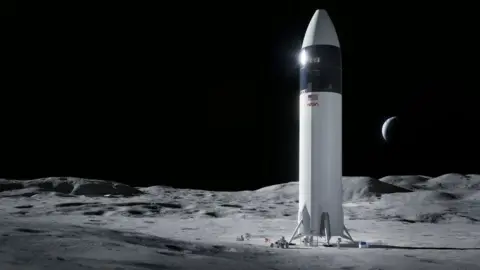 NASA
NASAIn the more distant future, Musk wants Starship to make long-haul trips to Mars and back – about a nine month trip each way.
“You could conceivably have five or six people per cabin, if you really wanted to crowd people in. But I think mostly we would expect to see two or three people per cabin, and so nominally about 100 people per flight to Mars,” Musk said.
The idea is to send the Ship part of the vehicle into low-Earth orbit, and “park” it there. It could then be refuelled in orbit by a SpaceX ‘tanker’ – essentially another Ship without the windows – for its onward journey to Mars.
It’s also conceivable that Starship could be used to launch space telescopes.
The Hubble telescope is about the size of a bus, and the James Webb telescope is almost three times as big as that.
To put up thousands of satellites quickly, or a bigger telescope, you need a big rocket.
Finally, Starship has also been built to carry heavy loads needed to build space stations, and eventually, infrastructure for a human presence on the Moon.
How much greenhouse gas does Starship emit?
A rocket that kicks 700 times harder than a passenger jet is bound to have some impact on the environment.
A draft environmental report by the US Federal Aviation Administration (FAA) released in July shows that the new licence SpaceX is applying for would allow them 25 launches of Starship per year.
The FAA say this would emit a total of 97,342 tonnes of CO2 equivalent – or 3,894 tonnes per launch.
In comparison, a typical car in the US emits about 4.6 tonnes of CO2 per year, according to the US Environmental Protection Agency.
If we crunch the numbers, that means one launch of Starship emits as much greenhouse gas as 846 cars would emit over the course of a year.
From a sheer numerical standpoint, that’s fairly insignificant compared to say, the commercial aviation industry.
But with Musk hoping to increase the number of launches to potentially hundreds per year in the future, those numbers could start adding up.
Science & Environment
Wall Street analysts downgrade Honeywell. We think they’re making a mistake.

Honeywell International Inc. signage is displayed on a monitor on the floor of the New York Stock Exchange (NYSE) in New York.
Michael Nagle | Bloomberg | Getty Images
Honeywell stock received a rare downgrade from JPMorgan on Thursday. It’s the first time in more than a decade that analysts at the firm lowered their rating.
-

 Science & Environment3 weeks ago
Science & Environment3 weeks agoHyperelastic gel is one of the stretchiest materials known to science
-

 Technology3 weeks ago
Technology3 weeks agoWould-be reality TV contestants ‘not looking real’
-

 Science & Environment3 weeks ago
Science & Environment3 weeks agoHow to unsnarl a tangle of threads, according to physics
-

 Science & Environment3 weeks ago
Science & Environment3 weeks ago‘Running of the bulls’ festival crowds move like charged particles
-

 Science & Environment3 weeks ago
Science & Environment3 weeks agoMaxwell’s demon charges quantum batteries inside of a quantum computer
-

 Womens Workouts3 weeks ago
Womens Workouts3 weeks ago3 Day Full Body Women’s Dumbbell Only Workout
-

 Science & Environment3 weeks ago
Science & Environment3 weeks agoLiquid crystals could improve quantum communication devices
-

 Science & Environment3 weeks ago
Science & Environment3 weeks agoQuantum ‘supersolid’ matter stirred using magnets
-
News4 weeks ago
the pick of new debut fiction
-

 Science & Environment3 weeks ago
Science & Environment3 weeks agoWhy this is a golden age for life to thrive across the universe
-

 Science & Environment3 weeks ago
Science & Environment3 weeks agoSunlight-trapping device can generate temperatures over 1000°C
-

 Science & Environment3 weeks ago
Science & Environment3 weeks agoITER: Is the world’s biggest fusion experiment dead after new delay to 2035?
-

 Science & Environment3 weeks ago
Science & Environment3 weeks agoNerve fibres in the brain could generate quantum entanglement
-

 Science & Environment3 weeks ago
Science & Environment3 weeks agoHow to wrap your mind around the real multiverse
-

 Science & Environment3 weeks ago
Science & Environment3 weeks agoQuantum forces used to automatically assemble tiny device
-

 News3 weeks ago
News3 weeks agoOur millionaire neighbour blocks us from using public footpath & screams at us in street.. it’s like living in a WARZONE – WordupNews
-

 Technology2 weeks ago
Technology2 weeks agoIs sharing your smartphone PIN part of a healthy relationship?
-

 Science & Environment2 weeks ago
Science & Environment2 weeks agoX-rays reveal half-billion-year-old insect ancestor
-

 Science & Environment3 weeks ago
Science & Environment3 weeks agoA slight curve helps rocks make the biggest splash
-

 Science & Environment3 weeks ago
Science & Environment3 weeks agoLaser helps turn an electron into a coil of mass and charge
-

 Science & Environment3 weeks ago
Science & Environment3 weeks agoPhysicists are grappling with their own reproducibility crisis
-

 Science & Environment3 weeks ago
Science & Environment3 weeks agoTime travel sci-fi novel is a rip-roaringly good thought experiment
-

 Science & Environment3 weeks ago
Science & Environment3 weeks agoNuclear fusion experiment overcomes two key operating hurdles
-
Business2 weeks ago
Eurosceptic Andrej Babiš eyes return to power in Czech Republic
-

 News4 weeks ago
News4 weeks ago▶️ Hamas in the West Bank: Rising Support and Deadly Attacks You Might Not Know About
-

 News3 weeks ago
News3 weeks agoYou’re a Hypocrite, And So Am I
-

 Sport3 weeks ago
Sport3 weeks agoJoshua vs Dubois: Chris Eubank Jr says ‘AJ’ could beat Tyson Fury and any other heavyweight in the world
-

 Science & Environment4 weeks ago
Science & Environment4 weeks agoCaroline Ellison aims to duck prison sentence for role in FTX collapse
-

 News3 weeks ago
News3 weeks ago▶️ Media Bias: How They Spin Attack on Hezbollah and Ignore the Reality
-

 Football2 weeks ago
Football2 weeks agoFootball Focus: Martin Keown on Liverpool’s Alisson Becker
-

 Science & Environment3 weeks ago
Science & Environment3 weeks agoA new kind of experiment at the Large Hadron Collider could unravel quantum reality
-
News3 weeks ago
The Project Censored Newsletter – May 2024
-
Business2 weeks ago
Should London’s tax exiles head for Spain, Italy . . . or Wales?
-

 Technology2 weeks ago
Technology2 weeks ago‘From a toaster to a server’: UK startup promises 5x ‘speed up without changing a line of code’ as it plans to take on Nvidia, AMD in the generative AI battlefield
-

 MMA2 weeks ago
MMA2 weeks agoConor McGregor challenges ‘woeful’ Belal Muhammad, tells Ilia Topuria it’s ‘on sight’
-

 Science & Environment3 weeks ago
Science & Environment3 weeks agoRethinking space and time could let us do away with dark matter
-

 News4 weeks ago
News4 weeks agoNew investigation ordered into ‘doorstep murder’ of Alistair Wilson
-

 Technology2 weeks ago
Technology2 weeks agoQuantum computers may work better when they ignore causality
-

 Sport2 weeks ago
Sport2 weeks agoWatch UFC star deliver ‘one of the most brutal knockouts ever’ that left opponent laid spark out on the canvas
-

 Technology2 weeks ago
Technology2 weeks agoGet ready for Meta Connect
-

 News3 weeks ago
News3 weeks agoIsrael strikes Lebanese targets as Hizbollah chief warns of ‘red lines’ crossed
-

 Technology4 weeks ago
Technology4 weeks agoThe ‘superfood’ taking over fields in northern India
-

 Science & Environment3 weeks ago
Science & Environment3 weeks agoUK spurns European invitation to join ITER nuclear fusion project
-

 Science & Environment3 weeks ago
Science & Environment3 weeks agoA tale of two mysteries: ghostly neutrinos and the proton decay puzzle
-

 Science & Environment3 weeks ago
Science & Environment3 weeks agoFuture of fusion: How the UK’s JET reactor paved the way for ITER
-

 Health & fitness2 weeks ago
Health & fitness2 weeks agoThe 7 lifestyle habits you can stop now for a slimmer face by next week
-
Business2 weeks ago
Ukraine faces its darkest hour
-

 Health & fitness3 weeks ago
Health & fitness3 weeks agoThe secret to a six pack – and how to keep your washboard abs in 2022
-

 Science & Environment3 weeks ago
Science & Environment3 weeks agoWhy we need to invoke philosophy to judge bizarre concepts in science
-

 News3 weeks ago
News3 weeks agoWhy Is Everyone Excited About These Smart Insoles?
-

 Technology3 weeks ago
Technology3 weeks agoRobo-tuna reveals how foldable fins help the speedy fish manoeuvre
-

 Science & Environment3 weeks ago
Science & Environment3 weeks agoPhysicists have worked out how to melt any material
-

 CryptoCurrency3 weeks ago
CryptoCurrency3 weeks agoCardano founder to meet Argentina president Javier Milei
-
Politics3 weeks ago
UK consumer confidence falls sharply amid fears of ‘painful’ budget | Economics
-

 MMA3 weeks ago
MMA3 weeks agoRankings Show: Is Umar Nurmagomedov a lock to become UFC champion?
-

 Womens Workouts3 weeks ago
Womens Workouts3 weeks agoEverything a Beginner Needs to Know About Squatting
-

 Science & Environment3 weeks ago
Science & Environment3 weeks agoMeet the world's first female male model | 7.30
-

 News3 weeks ago
News3 weeks agoFour dead & 18 injured in horror mass shooting with victims ‘caught in crossfire’ as cops hunt multiple gunmen
-

 Womens Workouts3 weeks ago
Womens Workouts3 weeks ago3 Day Full Body Toning Workout for Women
-

 Servers computers2 weeks ago
Servers computers2 weeks agoWhat are the benefits of Blade servers compared to rack servers?
-

 Politics4 weeks ago
Politics4 weeks agoTrump says he will meet with Indian Prime Minister Narendra Modi next week
-

 Sport3 weeks ago
Sport3 weeks agoUFC Edmonton fight card revealed, including Brandon Moreno vs. Amir Albazi headliner
-

 Health & fitness3 weeks ago
Health & fitness3 weeks agoThe maps that could hold the secret to curing cancer
-

 Science & Environment3 weeks ago
Science & Environment3 weeks agoBeing in two places at once could make a quantum battery charge faster
-

 News4 weeks ago
News4 weeks agoHow FedEx CEO Raj Subramaniam Is Adapting to a Post-Pandemic Economy
-

 CryptoCurrency3 weeks ago
CryptoCurrency3 weeks agoDecentraland X account hacked, phishing scam targets MANA airdrop
-

 CryptoCurrency3 weeks ago
CryptoCurrency3 weeks agoLow users, sex predators kill Korean metaverses, 3AC sues Terra: Asia Express
-

 CryptoCurrency3 weeks ago
CryptoCurrency3 weeks agoBlockdaemon mulls 2026 IPO: Report
-
Business3 weeks ago
Thames Water seeks extension on debt terms to avoid renationalisation
-

 Womens Workouts3 weeks ago
Womens Workouts3 weeks agoBest Exercises if You Want to Build a Great Physique
-

 TV3 weeks ago
TV3 weeks agoCNN TÜRK – 🔴 Canlı Yayın ᴴᴰ – Canlı TV izle
-

 Science & Environment3 weeks ago
Science & Environment3 weeks agoCNN TÜRK – 🔴 Canlı Yayın ᴴᴰ – Canlı TV izle
-

 Technology2 weeks ago
Technology2 weeks agoThe best robot vacuum cleaners of 2024
-

 News3 weeks ago
News3 weeks agoChurch same-sex split affecting bishop appointments
-

 CryptoCurrency3 weeks ago
CryptoCurrency3 weeks agoEthereum is a 'contrarian bet' into 2025, says Bitwise exec
-

 Technology3 weeks ago
Technology3 weeks agoiPhone 15 Pro Max Camera Review: Depth and Reach
-

 Science & Environment3 weeks ago
Science & Environment3 weeks agoHow one theory ties together everything we know about the universe
-
Business4 weeks ago
JPMorgan in talks to take over Apple credit card from Goldman Sachs
-

 Science & Environment3 weeks ago
Science & Environment3 weeks agoQuantum time travel: The experiment to ‘send a particle into the past’
-

 Science & Environment3 weeks ago
Science & Environment3 weeks agoTiny magnet could help measure gravity on the quantum scale
-

 Science & Environment3 weeks ago
Science & Environment3 weeks agoMost accurate clock ever can tick for 40 billion years without error
-

 CryptoCurrency3 weeks ago
CryptoCurrency3 weeks agoBitcoin miners steamrolled after electricity thefts, exchange ‘closure’ scam: Asia Express
-

 CryptoCurrency3 weeks ago
CryptoCurrency3 weeks agoDorsey’s ‘marketplace of algorithms’ could fix social media… so why hasn’t it?
-

 CryptoCurrency3 weeks ago
CryptoCurrency3 weeks agoDZ Bank partners with Boerse Stuttgart for crypto trading
-

 CryptoCurrency3 weeks ago
CryptoCurrency3 weeks agoBitcoin bulls target $64K BTC price hurdle as US stocks eye new record
-
Politics3 weeks ago
‘Appalling’ rows over Sue Gray must stop, senior ministers say | Sue Gray
-

 News3 weeks ago
News3 weeks agoBrian Tyree Henry on voicing young Megatron, his love for villain roles
-

 CryptoCurrency3 weeks ago
CryptoCurrency3 weeks agoCoinbase’s cbBTC surges to third-largest wrapped BTC token in just one week
-

 Politics2 weeks ago
Politics2 weeks agoHope, finally? Keir Starmer’s first conference in power – podcast | News
-

 News2 weeks ago
News2 weeks agoUS Newspapers Diluting Democratic Discourse with Political Bias
-

 Technology2 weeks ago
Technology2 weeks agoUniversity examiners fail to spot ChatGPT answers in real-world test
-

 Technology2 weeks ago
Technology2 weeks agoMicrophone made of atom-thick graphene could be used in smartphones
-

 News3 weeks ago
News3 weeks agoBrian Tyree Henry on voicing young Megatron, his love for villain roles
-

 Science & Environment3 weeks ago
Science & Environment3 weeks agoHow do you recycle a nuclear fusion reactor? We’re about to find out
-

 CryptoCurrency3 weeks ago
CryptoCurrency3 weeks agoRedStone integrates first oracle price feeds on TON blockchain
-

 CryptoCurrency3 weeks ago
CryptoCurrency3 weeks ago‘No matter how bad it gets, there’s a lot going on with NFTs’: 24 Hours of Art, NFT Creator
-
Business3 weeks ago
How Labour donor’s largesse tarnished government’s squeaky clean image
-

 Travel3 weeks ago
Travel3 weeks agoDelta signs codeshare agreement with SAS
-

 CryptoCurrency3 weeks ago
CryptoCurrency3 weeks agoLouisiana takes first crypto payment over Bitcoin Lightning
-

 CryptoCurrency3 weeks ago
CryptoCurrency3 weeks agoCrypto scammers orchestrate massive hack on X but barely made $8K

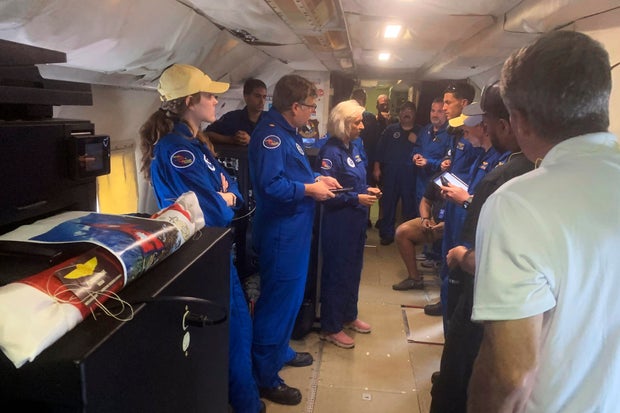

You must be logged in to post a comment Login